As I am disabled I have to use a headstick (see picture below) to do stuff on the computer. I also have a phone with a resistive touchscreen, which works well with my headstick.

But here is the problem: I cannot operate any devices with capacitive touchscreens, since the tip of the headstick is made of plastic. I heard, though, of conducting polymers, and wondered if my problem could be solved using those. So basically I thought of just making a new tip of such a conductive plastic.
What do you think about this approach? How expensive are these materials? What can yu say about their electrical properties vs. human skin? Would this be a good idea?
Would something different work? Like putting a little coil inside the tip of the headstick?
